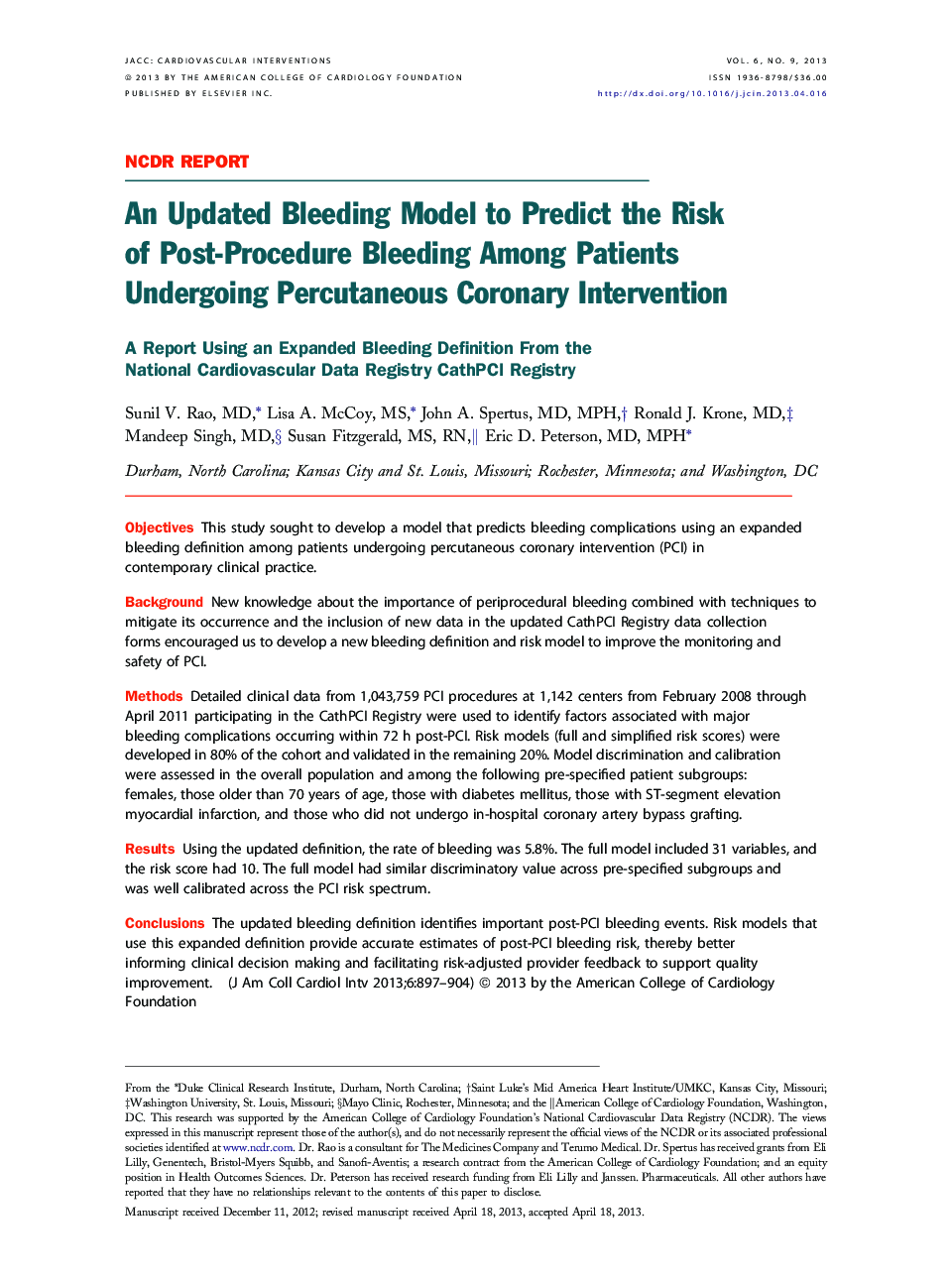| کد مقاله | کد نشریه | سال انتشار | مقاله انگلیسی | نسخه تمام متن |
|---|---|---|---|---|
| 2940555 | 1177037 | 2013 | 8 صفحه PDF | دانلود رایگان |

ObjectivesThis study sought to develop a model that predicts bleeding complications using an expanded bleeding definition among patients undergoing percutaneous coronary intervention (PCI) in contemporary clinical practice.BackgroundNew knowledge about the importance of periprocedural bleeding combined with techniques to mitigate its occurrence and the inclusion of new data in the updated CathPCI Registry data collection forms encouraged us to develop a new bleeding definition and risk model to improve the monitoring and safety of PCI.MethodsDetailed clinical data from 1,043,759 PCI procedures at 1,142 centers from February 2008 through April 2011 participating in the CathPCI Registry were used to identify factors associated with major bleeding complications occurring within 72 h post-PCI. Risk models (full and simplified risk scores) were developed in 80% of the cohort and validated in the remaining 20%. Model discrimination and calibration were assessed in the overall population and among the following pre-specified patient subgroups: females, those older than 70 years of age, those with diabetes mellitus, those with ST-segment elevation myocardial infarction, and those who did not undergo in-hospital coronary artery bypass grafting.ResultsUsing the updated definition, the rate of bleeding was 5.8%. The full model included 31 variables, and the risk score had 10. The full model had similar discriminatory value across pre-specified subgroups and was well calibrated across the PCI risk spectrum.ConclusionsThe updated bleeding definition identifies important post-PCI bleeding events. Risk models that use this expanded definition provide accurate estimates of post-PCI bleeding risk, thereby better informing clinical decision making and facilitating risk-adjusted provider feedback to support quality improvement.
Journal: JACC: Cardiovascular Interventions - Volume 6, Issue 9, September 2013, Pages 897–904